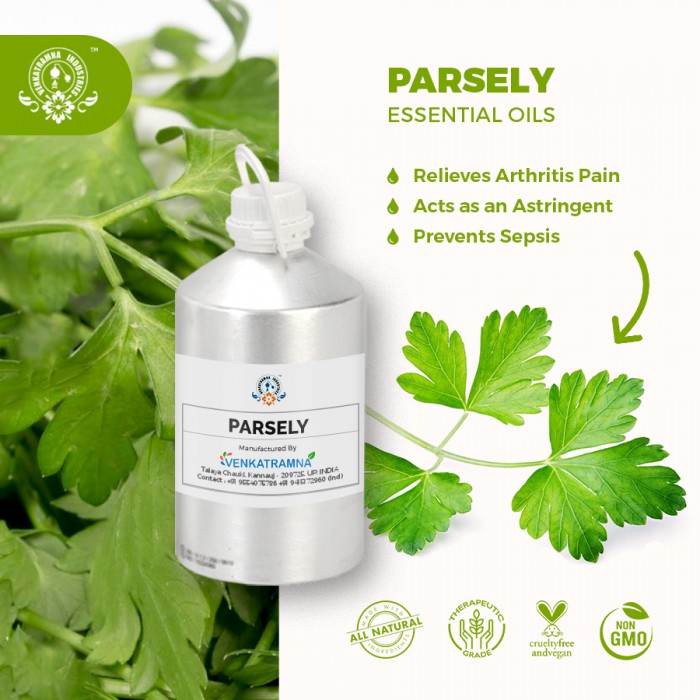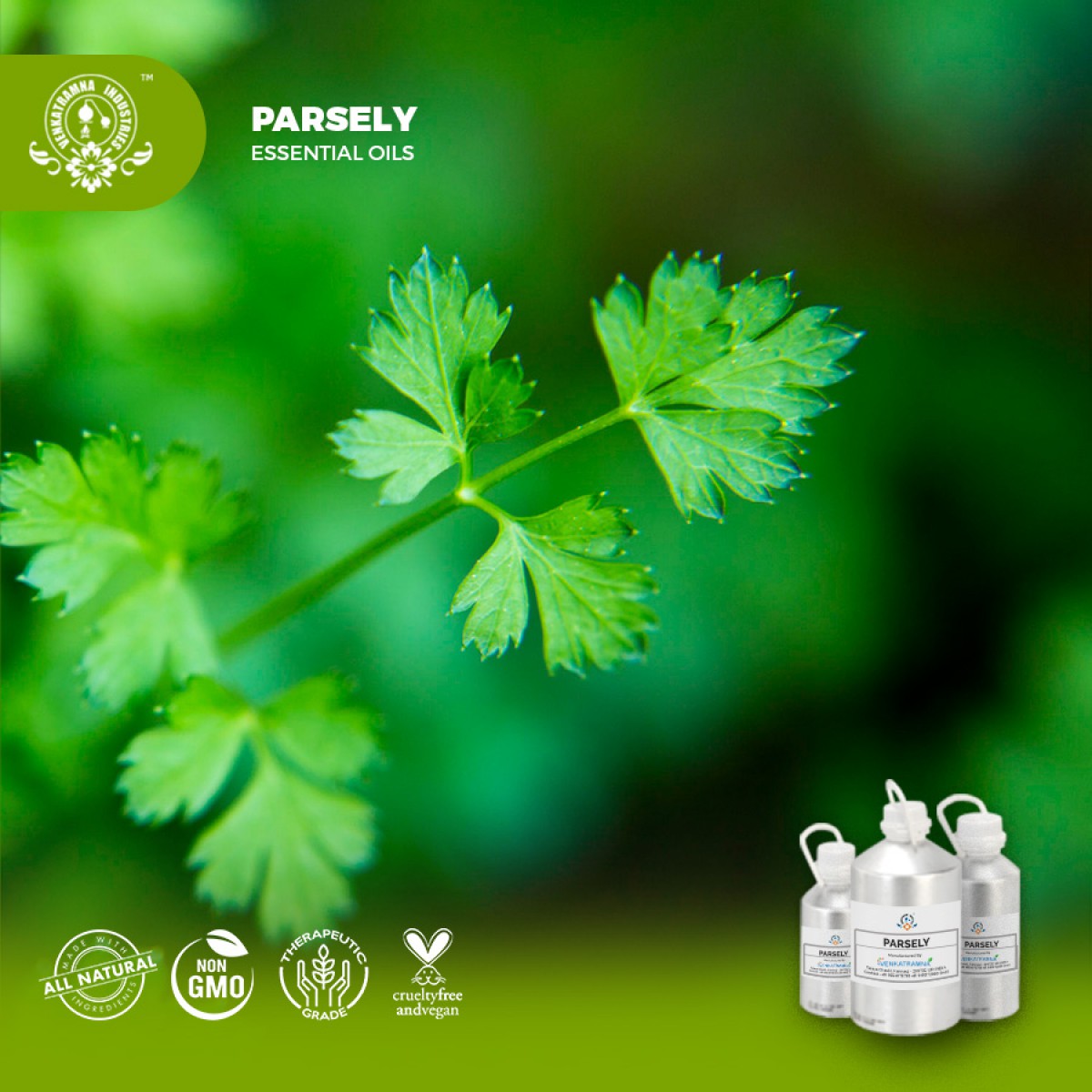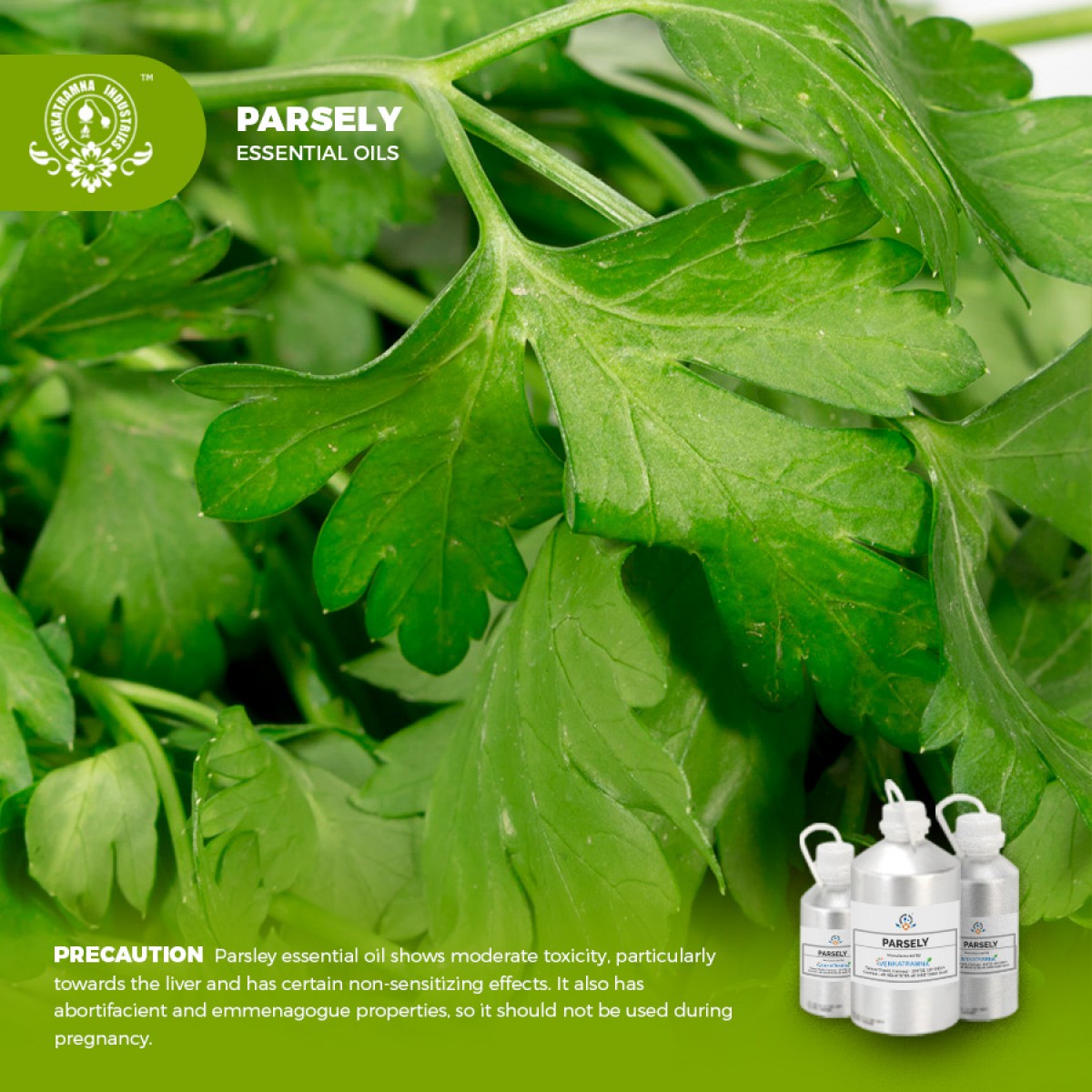Botanical Name: Petroselinum Sativum Common name: Garden parsley, rock parsley Read More
|
Botanical Name: |
Petroselinum
Sativum |
|
Common name: |
Garden
parsley, rock parsley |
|
Plant
family: |
Apiaceae |
|
Genus: |
Petroselinum |
|
Appearance/Color: |
Clear to light yellow or greenish liquid with thin consistency |
|
Odor: |
Fresh
herbaceous aroma of parsley |
|
Blends With: |
Clary Sage, Orange, Rose, Tea Tree and Ylang-Ylang. |
|
Origin: |
India |
|
Source: |
Leaves |
|
Method
of Extraction: |
Steam
Distillation |
Parsley
Leaves energetic allows one to let go of distrust thought forms. If you want to
begin to trust others and life again, wear Parsley Oil daily as a perfume and
remind yourself that others may let you down, but you are there for you.
Parsley grows wild over a wide area of Western Asia and southern Europe, prompting the comment, "It is hard to define exactly where this plant is wild and where it only recently established itself. Fifteen desiccated Mericarps were found in the Pre-Pottery Neolithic B level of the Nahal Hemar Cave in Israel, which may be the oldest archaeological find of Parsley. About half a liter (a pint) of Parsley mericarps was recovered from the tomb of Tutankhamen, and because this plant does not grow wild in Egypt, Zohary and Hopf interpret this find as proof that coriander was cultivated by the Ancient Egyptians.
DISCLAIMER
The complete range of conditions
or methods of use are beyond our control therefore we do not assume any
responsibility and expressly disclaim any liability for any use of this
product. Information contained herein is believed to be true and accurate however,
all statements or suggestions are made without warranty, expressed or implied,
regarding accuracy of the information, the hazards connected with the use of
the material or the results to be obtained from the use thereof. Compliance
with all applicable federal, state, and local laws and local regulations
remains the responsibility of the user.
The FDA has not evaluated the
statements on this website. No claims are made by Venkatramna Industries as to
the medicinal value of any products from vriaroma.com or by us. The information
presented here is for educating our customers about the traditional uses of
essential oils and is not intended to diagnose, treat, cure, or prevent any
disease. You are responsible for understanding the safe application of these products.
If you have any questions, please call or email us for further information.
As per NAHA guidelines, New Directions Aromatics
(NDA) does not recommend the ingestion of essential oils. It is imperative to
consult a medical practitioner before using Essential Oils for therapeutic
purposes. Pregnant and nursing women and those taking prescription drugs are
especially advised not to use this product without the medical advice of a
physician. The oil should always be stored in an area that is inaccessible to
children, especially those under the age of 7.
In
culinary applications, freshly picked parsley is preferred for almost all
cuisines across the world. The green colour and fresh aroma add extra flavour
and richness to dishes and are popular since good olden times. Parsley oil
exhibits antimicrobial, antiseptic, astringent, carminative, digestive,
diuretic, and detoxifying properties which give more demand for its wide range
of applications.
It
also has aromatherapeutic uses and has been used to treat various illnesses,
including jaundice and malaria. This oil also has antibacterial and
antifungal properties that can help treat pimples, acne and skin infections, as
well as disinfect pores.
Diluted
parsley oil can also be massaged onto the scalp to help prevent hair loss.
In industrial
applications, parsley oil is used as an ingredient for soaps, cosmetics,
detergents, colognes and perfumes, especially men’s fragrances majorly
accounting for its aroma.
Parsley
oil can kill microbes and inhibit their growth giving protection from various
infections and diseases.
Parsley
essential oil helps detoxify body of toxins and refreshes blood. It also
increases circulation, which helps relieve pain brought on by these ailments.
Parsley
essential oil’s carminative properties can help relieve and treat indigestion,
nausea, flatulence, vomiting and stomach aches.
COMMON
USAGE
·
Relieves
Arthritis
·
Pain
Prevents Sepsis
·
Acts
as an Astringent
·
Relieves
Flatulence
·
Detoxifies
Body
·
Improves
Digestion
·
Promotes
Urination
·
Depurative
Agent
·
Acts
as an Emmenagogue
·
Reduces
Fever
·
Lowers
Blood Pressure
·
Relieves
Constipation
·
Stimulates
Nerves
·
Protects
Stomach
·
Improves
Uterine Health
Ingredients:
|
S.No |
Key Constituents |
Strength (%) |
|
1 |
p-Mentha-1,3,8-triene |
6.2–45.2 |
|
2 |
b-Myrcene |
7.8–23.8 |
|
3 |
b-Phellandrene |
6.7–19.5 |
|
4 |
Myristicin |
1.9–8.8 |
|
5 |
a-Pinene |
6.9–7.6 |
|
6 |
Terpinolene |
2.8–6.6 |
|
7 |
(þ)-Limonene |
3.3–5.4 |
|
8 |
a-p-Dimethylstyrene |
2.7–5.4 |
|
9 |
Dill apiole |
0.2–5.2 |
|
10 |
b-Pinene |
4.6–4.9 |
|
11 |
a-Phellandrene |
1.0–1.5 |
|
12 |
p-Mentha-1,4,8-triene |
0–1.2 |
Safety Summary
·
Hazards:
Toxicity; may be abortifacient. Contraindications (all routes)
·
Cautions: Pregnancy, breastfeeding.
Maximum
adult daily oral dose 538 mg
Maximum
dermal use level 14.6%.
Organ Specific Effects
·
Adverse skin reaction: Undiluted parsley leaf oil was severely
irritating to rabbits, but was not irritating to mice or pigs; tested at 2% on
25 volunteers it was neither irritating nor sensitizing. It is non-phototoxic.
Parsley leaf oil typically contains 20 ppm bergapten. This is not sufficient to
cause a phototoxic reaction, although it may contribute to the total psoralen
content of a mixture.
·
Reproductive toxicity: Parsley is a commonly used abortifacient in
South America. Apiole and various preparations of parsley have been used for
many years to procure illegal abortion in Italy. Post-abortive vaginal
bleeding, sometimes profuse, is a feature of these cases.
Systemic
Effects
·
Acute
Toxicity: Acute oral LD50
in rats 3.3 g/kg; acute dermal LD50 in rabbits >5 g/kg.
· Carcinogenic/anti carcinogenic potential: Parsley leaf oil significantly induced glutathione S-transferase activity in mouse tissues. It contains no known carcinogens. Myristicin and (þ)-limonene display anti carcinogenic activity.
·
Ecotoxicity: no data available
·
Bioaccumulation: No data available
·
Mobility in soil: No data available
·
Persistence and degradability: No data available
·
PBT and vPvB assessment: No data available
·
Avoid direct exposure into water streams and
ground water sources.





 MSDS-Parsely.pdf
MSDS-Parsely.pdf




